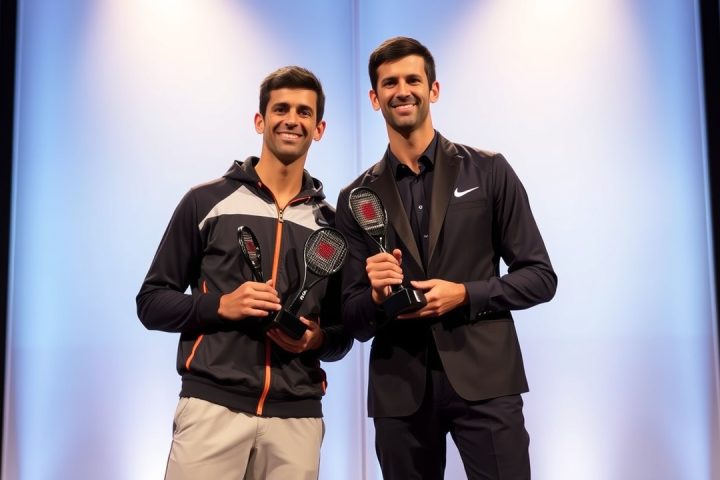The Blurred Lines of Sportsmanship
In the world of sports, the line between clever play and outright gamesmanship often blurs, with players navigating the unspoken rules in search of competitive advantage. Such players, known for leveraging the grey areas of competition, might not be overt rule-breakers but can certainly push boundaries to their limits. Tennis has its own share of these talented provocateurs, and one of the current avatars of this strategy—Laura Siegemund—is poised to face Aryna Sabalenka in a high-stakes Wimbledon quarterfinal match that may test the world’s number one player immensely.
Laura Siegemund’s Unconventional Style
Siegemund, who is competing in her first Wimbledon quarterfinal, is recognized for her unconventional style, characterized by a slice-heavy playing method and various changes in pace. Her ability to frustrate opponents is well documented, as seen in her recent fourth-round encounter with Solana Sierra—a relatively inexperienced player in the Grand Slam scene. The match began with Siegemund arriving approximately five minutes late, a move that heightened Sierra’s pre-match nerves. Once the match commenced, Siegemund’s deliberate pace between points and her frequent racket changes served to disrupt Sierra’s momentum.
Controversy and Commitment
Despite the controversy around her playing style, Siegemund argues that her tactics are not meant to incite irritation, insisting that her approach is simply part of her game.
“I have my weird stuff going on,” she acknowledged in a post-match press conference. “I’ve been doing it all my life… I do it for me and not against others.”
Siegemund asserts her commitment to her unique style, vowing to maintain her approach regardless of her opponent. This next match against Sabalenka is not just about tennis; it is also a psychological battleground where Siegemund’s keen understanding of her opponent’s psyche, aided by her psychology degree, may become crucial.
The Dark Arts of Competition
The notion of players engaging in the so-called “dark arts” is not new. History shows athletes across sports employing tactics to gain a competitive edge. For instance, tennis legends like Rafael Nadal have encountered fierce opponents who effectively dissected his game during high-stakes matches. Robin Söderling, for instance, famously rattled Nadal with psychological ploys before ultimately defeating him at Roland Garros.
Time Management and Medical Timeouts
Throughout the sport’s history, various tactics, including time management and medical timeouts (MTOs), have been utilized effectively. Siegemund’s notorious time management has stirred discontent among audiences, with fans occasionally expressing disdain at her pace. This year’s U.S. Open highlighted the tension surrounding her style when Gauff called attention to her slow play—a debate that intensified when spectators became vocal about it.
Further muddying the waters of sportsmanship, MTOs and bathroom breaks remain some of the most contentious areas in tennis. Players often capitalize on these rules to disrupt the flow of their opponents. For example, a past encounter between Siegemund and Sabalenka’s close associate, Paula Badosa, saw significant clock manipulation during the Miami Open, where elapsed time raised eyebrows. Likewise, players are frequently criticized for taking strategic pauses during matches, leading to heated confrontations on the court.
Regulations and the Future of Sportsmanship
Inevitably, these perceived infringements of conduct do not only create tension but inspire the introduction of new regulations aimed at curtailing perceived gamesmanship—one recent change limits bathroom breaks to one per match, a response to players leveraging that flexibility unduly against their adversaries. Yet, players continue to navigate these parameters, with flashy drama and underlying strategies at play that keep both fans and officials alert.
Conclusion
As Siegemund prepares to face Sabalenka, the match promises to highlight a broader discussion about the ethics of competitive play, revealing how players adapt to, and at times exploit, the framework of tennis regulations for pursuit of victory. When the courts fill for the quarterfinal showdown, observers should watch not only for the outcomes on the scoreboard but also for the subtleties of sportsmanship and strategy that unfold beneath the surface.




